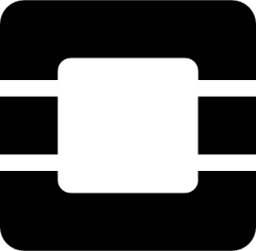Shopping for a new cloud provider is no simple task. With countless options and service offerings, it’s easy to go around in circles and waste more time than needed. However, by preparing beforehand, you can significantly streamline the process, save valuable time, and ensure you receive accurate quotes that align with your business needs.
This article outlines the essential questions you should answer before contacting potential providers or submitting a request for proposal (RFP). Having this information ready to go will speed up and streamline your search, leading to more productive conversations and faster turnaround times. Not to mention more accurate quotes!
Think of it as equipping yourself with the right tools for the job. By having these answers ready, you’ll help prospective providers quickly understand your requirements and offer tailored solutions.
At OpenMetal, we have a standardized set of questions and information we need to know to provide an accurate and complete quote. Giving us this information during your initial reach out is the best way to reduce the rigamarole and allow us to give you the quote and details you need without a ton of back and forth! We’ve built this article based on the questions we ask, so while different vendors may ask for a bit of extra information, these should cover what the vast majority of cloud infrastructure providers want to know.
So without further ado, here are the key areas you should consider and information you should provide to potential new cloud infrastructure providers:
Hardware Requirements
This is the foundation of your infrastructure. Define your needs in terms of:
- Compute: How much processing power (CPU), memory (RAM), and storage (disk space) do you require? Consider current usage as well as projected growth.
- Storage Type: Do you need high-performance SSDs, cost-effective HDDs, or a mix?
- Networking: What are your bandwidth needs, and do you require any specific network configurations (e.g., VLANs, VPNs)?
Data Center Location Requirements
Where your data lives matters. Consider factors like:
- Latency: How important is proximity to your users or other critical systems?
- Compliance: Are there any regulatory requirements regarding data residency (e.g., GDPR)?
- Disaster Recovery: Do you need geographically diverse data centers for redundancy?
Current Hosting Environment
Understanding your current setup helps providers assess your migration needs. Be prepared to share:
- Current Hosting Method: Are you using bare metal servers, a hosted private cloud, a public cloud, on-premises infrastructure, or a mix?
- Hardware Age (If Applicable): If you’re currently using physical hardware, knowing its age helps providers understand your potential pain points and suggest appropriate upgrades.
Current Bandwidth Usage
This is crucial for ensuring adequate network performance. Provide details on:
- Average and Peak Bandwidth: How much bandwidth do you typically use, and what are your peak usage periods?
- Data Transfer Volume: How much data do you transfer in and out of your servers?
Workload Description
Clearly define the purpose of your servers. Common examples include:
- Web Hosting: Hosting websites and web applications.
- Database Servers: Storing and managing databases.
- Application Servers: Running business applications.
- Development/Testing Environments: Used for software development and testing.
Virtualization Technology (If Applicable)
If you’re using virtualization, specify the platform:
- Virtualization Platform: Are you using VMware, Hyper-V, Proxmox, Nutanix, OpenStack, or another platform?
- Number of VMs: How many virtual machines are you currently running?
Contractual Obligations
Transparency about existing contracts is essential:
- Current Contract Status: Are you currently under contract with another provider?
- Contract Expiry Date: If so, when does your current contract expire?
Technical Requirements
Outline any specific technical needs:
- Operating Systems: Do you require specific operating systems (e.g., Windows Server, Linux distributions)?
- Software and Applications: Any software or applications that need to be supported?
- Security Requirements: Do you have specific security requirements (e.g., firewall rules, intrusion detection)?
Non-Technical Requirements
Consider factors beyond technical specifications:
- Budget: What is your budget for cloud services? Do you expect this to increase in the future or stay steady?
- Support and Service Level Agreements (SLAs): What level of support do you require?
- Compliance and Certifications: Do you need a provider with specific compliance certifications (e.g., ISO 27001, SOC 2)?
Deployment Target Date
Having a target date helps providers prioritize your project and allocate resources accordingly.
Wrapping Up
By preparing answers to these questions, you’ll be ready to engage with potential new cloud providers. This proactive approach will save you time, ensure accurate quotes, and ultimately lead to a smoother and more successful cloud migration.
Then, once you’ve narrowed down your cloud infrastructure provider search, check out this article to make sure you get all the information you need to make the best final choice: Shopping for a New Cloud Provider? Ask These Questions.
Interested in OpenMetal Cloud?
Schedule a Consultation
Get a deeper assessment and discuss your unique requirements.
Read More on the OpenMetal Blog


































